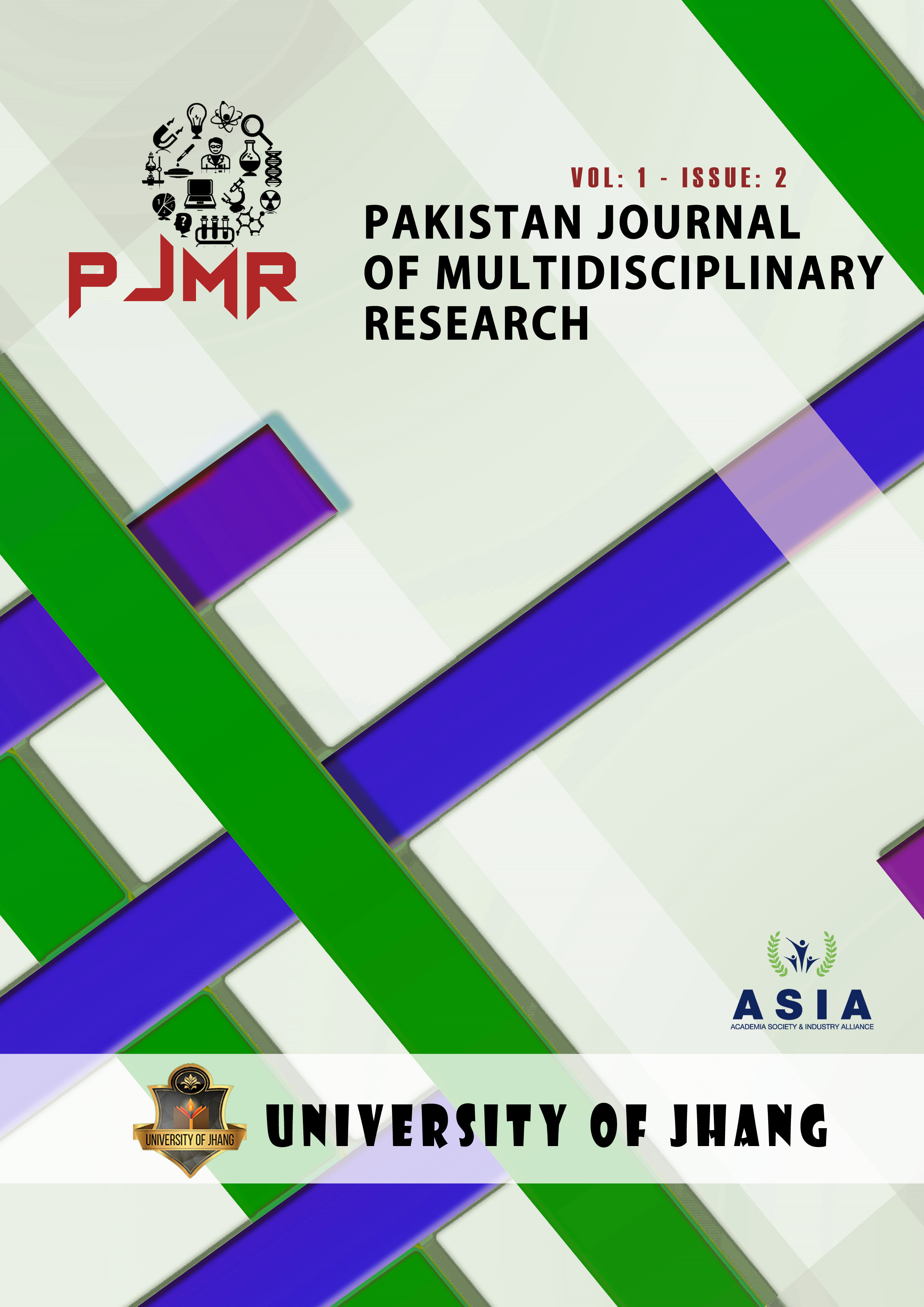Analysis of Lion (2016) as an Adapted Biopic of “A Long Way Home”
Main Article Content
Abstract
The present study sets out to analyse a biopic Lion (2016) which is adapted from Saroo Brierley ‘s bestselling book A Long Way Home (2013). The book and the movie depict the incredible life history of Saroo Brierley, a five years old child, and now a young man, who used modern technology “Google Earth” to rediscover himself including childhood life and hometown in India. At the age of five, unfortunate Saroo Brierley got lost in a local train in India which caused him to face many dreadful realities of life in Calcutta before being formally adopted by an Australian couple through an orphanage. The analysis of the study reveals that the movie qualifies for Giannetti’s (2008) concept of faithful adaptation as well as Wagner’s (1975) two modes of adaptation i.e. transposition and commentary. The present study also addresses Stam’s (2000) criticism on strict fidelity to discuss medium specificity approach. The study concludes that biopic, as a representative of its genre and like other genres, has specific conventions and the movie Lion (2016) successfully qualifies for biopic as a genre.
Article Details
References
Alabi, A. (2005). Telling our stories: Continuities and divergences in Black autobiographies.
New York: Palgrave Macmillan.
Berger, D. (2014) Projected Art History: Biopics, Celebrity Culture, and the Popularizing of
American Art. New York: Bloomsbury Academic.
Bingham, D. (2010). Whose lives are they anyway? The biopic as contemporary film genre.
Ne Jersey, NJ: Rutgers University Press.
Bo, B. (2008). The differences between novels and films. US-China Education Review, 5(7), 58-61.
Brierley, S. (2013). A Long way Home.New York: Prnguin Publishers.
Bulkina, I. (2013). The Lives of Remarkable People, Russian Studies in Literature, 49:2, 87-95
Burnett, M.T. (2012). Filming Shakesapeare in Global Market.Basingstoke: Palgrave.
Cattrysse, P. (1997). “The Unbearable Lightness of Being: Film Adaptation Seen from a Different Perspective.” Literature/Film Quarterly ,25 (3): 222–229.
Chen,S. A. (2016). Lion Movie Review. Retrieved from
https://www.commonsensemedia.org/movie-reviews/lion
Cheshire, E. (2015). Bio-pics: A life in pictures. New York, NY: Columbia University Press.
Coslett, T. (2000). Textualisation of the self and gender Identity in life-story. In T.
Coslett, P. Summerfield & C. Lury (Eds.), Feminism & amp; autobiography: Texts, theories, methods (pp. 61-75). London: Routledge.
Custen, G. F. (1992). Bio/pics: How Hollywood constructed public history. New Jersey, NJ: Rutgers University Press.
Giannetti, L. (2008). Understanding movies. New Jersey, NJ: Pearson Prentice Hall.
Gusdorf, G. (1980). Conditions and limits of autobiography. (J. Olney, Trans.). In J.
Onley (Ed.), Autobiography, essays theoretical and critical (pp. 28-48).
Princeton, N.J: Princeton University Press.
Marciniak, M. (2007). The appeal of literature-to-film adaptations. Lingua ac communitas, 17, 59-67.
Mason, M. G. (1980). The other voice: Autobiographies of women writers. In J.
Olney (Ed.), Autobiography: Essays theoretical and critical (pp. 207-235). Princeton: Princeton University Press.
McFarlane, B. (1996). Novel to film: an introduction to the theory of adaptation. Oxford University Press, USA.
Monaco, J. (1981). How to read a film: The art, technology, language, history and theory of film and media. New York; Oxford: Oxford University Press.
Neale, S. (2000). Genre and Hollywood. NewYork: Psychology Press.
Olney, J. (1998). Memory & narrative: The weave of life-writing. Chicago: University of Chicago Press.
Spirou,P. (2014). Walk Hard: film parody, biopics and music.Comedy studies, vol.5(1), 52-63.
Stam, R. (2000). Beyond fidelity: The dialogics of adaptation. Film adaptation, 54-76.
?tirbe?iu, M. (2001). LITERATURE AND FILM ADAPTATION THEORY. LANGUAGE AND
DISCOURSE, 1, 492-498.
Taylor, H. M. (2002). Rolle Des Leben Die Filmbiographies as narratives.Marburg: Schuren
Wagner, G. A. (1975). The novel and the cinema. New Jersey, N.J: Rutherford University Press.
Watson, M. (1999). Lives of their own: Rhetorical dimensions in autobiographies of
women activists. Columbia, S.C: University of South Carolina Press.
Weintraub, K. J. (1975). Autobiography and historical consciousness. Critical
Inquiry, 1(4), 821-848.
Whelehan, I. (2006). Introduction to Adaptation. Adaptation, Volume 1, Issue 1, 1-4.
Vyavahre, V. (2017) (2018, January 23). Lion [Blog post] retrieved from

